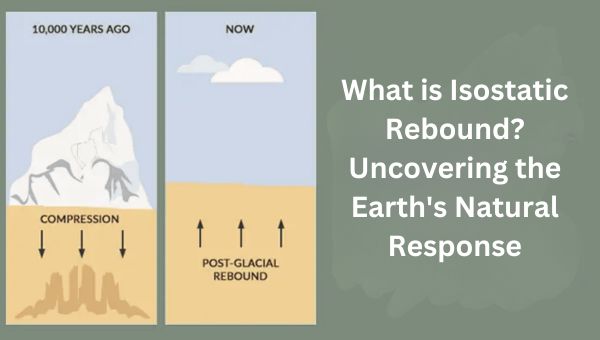Physical Address
304 North Cardinal St.
Dorchester Center, MA 02124
Isostatic rebound is a remarkable geological phenomenon that occurs when the Earth’s crust gradually rises after the removal of an overlying weight, such as melting glaciers. This process, also known as post-glacial rebound, plays a critical role in shaping our planet’s landscape and can take thousands of years to unfold.
As ice sheets from the last Ice Age recede, they leave behind a legacy that affects not only land elevation but also sea levels and ecosystems. The ongoing effects of isostatic rebound remind us of the dynamic nature of Earth’s surface and its profound implications for our environment.
Contents
Isostatic rebound, also known as post-glacial rebound, is a geological phenomenon that occurs when the Earth’s crust rises after the removal of heavy ice sheets or glaciers. During the last Ice Age, immense ice masses depressed the crust beneath them.

As these glaciers melted due to climate change, the pressure on the crust was alleviated, allowing it to gradually rise back to its original elevation.
This process can take thousands of years and continues to be observed in various regions around the world today. Below are key aspects of isostatic rebound:
The mechanism behind isostatic rebound can be understood through the following steps:
This remarkable geological adjustment illustrates the dynamic nature of our planet’s surface in response to climatic changes over millennia.
Also Read: 10 Asthenosphere Facts: Exploring the Earth’s Mysterious Layer
The process of isostatic rebound refers to the Earth’s crust rising after being depressed by the weight of ice sheets or glaciers. This phenomenon occurs due to the melting of these ice masses, which reduces the pressure on the crust, allowing it to slowly rise back to its original elevation.
Isostatic rebound is a crucial aspect of understanding geological and environmental changes, particularly in relation to sea level rise and land stability.
As glaciers recede, the land beneath them can take thousands of years to adjust fully, leading to various ecological impacts.
Key Points about Isostatic Rebound:
Isostatic rebound is essential for predicting future changes in coastal regions and for managing potential risks associated with rising sea levels.
Also Read: Carbon Dating Explained: Method, Uses, Limitations & Facts
Isostatic rebound, also known as post-glacial rebound, is the process by which the Earth’s crust rises after the removal of a heavy load, typically from melting glaciers or ice sheets. This phenomenon occurs as the lithosphere adjusts to changes in weight, seeking a new state of equilibrium.
Scandinavia: One of the most prominent examples of isostatic rebound can be observed in Scandinavia. Following the last Ice Age, which ended over 10,000 years ago, the region experienced significant uplift as the thick ice sheets melted. The crust in Scandinavia continues to rise today at rates of several millimeters per year.
Hudson Bay Region, Canada: The Hudson Bay area is another critical site for studying isostatic rebound. The Laurentide Ice Sheet that once covered this region caused substantial crustal depression. As this ice melted, the land began to rise significantly. Current measurements indicate that the shoreline at Churchill, Manitoba is rising at approximately 4.3 feet per century.
Red River Valley, North Dakota and Minnesota: In the Red River Valley, isostatic rebound has influenced river routes due to changes in land elevation. As the land rebounded more in northern areas where ice was thicker, rivers like the Red Lake River altered their courses to follow steeper gradients.
Ontario, Canada: Parts of Ontario are also experiencing rapid isostatic rebound. Areas along Hudson Bay are rising at rates between 1 to 1.3 meters (approximately 3.4 to 4.3 feet) per century due to the melting of ancient ice sheets that previously depressed the land.
The phenomenon of post-glacial rebound plays a significant role in shaping our planet’s geological landscape. As glaciers melt and the weight on the Earth’s crust diminishes, the crust gradually rises back to its original position, a process that can span thousands of years.
This natural adjustment not only influences land elevation but also affects sea levels and coastal ecosystems.
Post-glacial rebound is essential for accurate geological assessments and environmental planning, especially in the context of climate change and its impact on coastal regions.